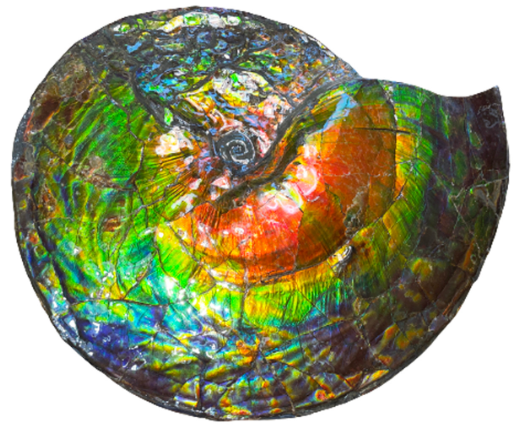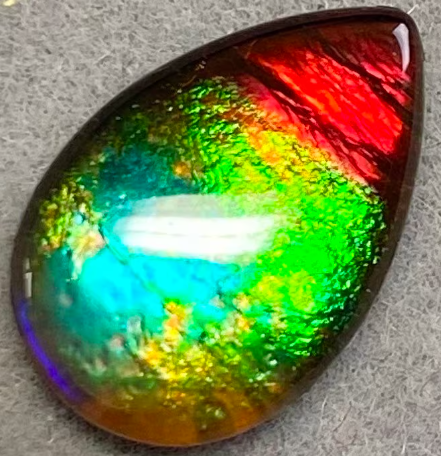AMMOLITE
Originating 71 Million years ago. The result of tectonic pressure and mineralization formed the colourful Ammolite gemstone.
Ammolite is formed from the fossilized remains of extinct marine mollusks called ammonites. These mollusks lived approximately 65 to 240 million years ago, during the Cretaceous period
Blackfoot Indians first discovered IT in an area bordering the Canadian Rocky Mountains. They called it ‘iniskim’ (I-nis’kim) or buffalo stone.

iT is an opal-like organic gemstone found primarily along the eastern slopes of the Rocky Mountains of North America.
It is made of the fossilized shells of ammonites, which in turn are composed primarily of aragonite, the same mineral contained in nacre, with a microstructure inherited from the shell.
iT can come in any color of the rainbow but most are green and red. Blue and violet are rare and, typically, more valuable. Ammolite is considered one of the world’s rarest and most valuable gemstones.
What is the difference between Ammonite and Ammolite?
An Ammonite is the actual fossil and Ammolite is the gemstone that is cut from the fossil
USES
Due to its delicacy, Ammolite is best used in pendants, earrings, and broaches.
If used as a ring stone, Ammolite should be given a hard protective cap.

MOHS
Natural Ammolite is soft, with a hardness of 3.5 to 4 on the Mohs scale.
LUSTER
It is transparent to translucent with a vitreous luster.
CHEMICAL COMPOUND
Ammolite is chemically composed of calcium carbonate (CaCO3) aragonite, with minor amounts of other minerals and impurities.
- Aragonite: The mineral that makes up the shells of ammonite fossils
- Other minerals: May include calcite, silica, pyrite, or other minerals
- Trace elements: May include aluminum, barium, chromium, copper, iron, magnesium, manganese, strontium, titanium, and vanadium.
WHERE TO FIND
Although Ammonite fossils can be found around the world, the Ammolite gemstone has only been found in one place: the Bearpaw Geological Formation in Alberta, Canada.
DIAGNOSTIC PROPERTIES
A thin layer of iridescent color, often with a fractured appearance, on a base of siderite or shale.